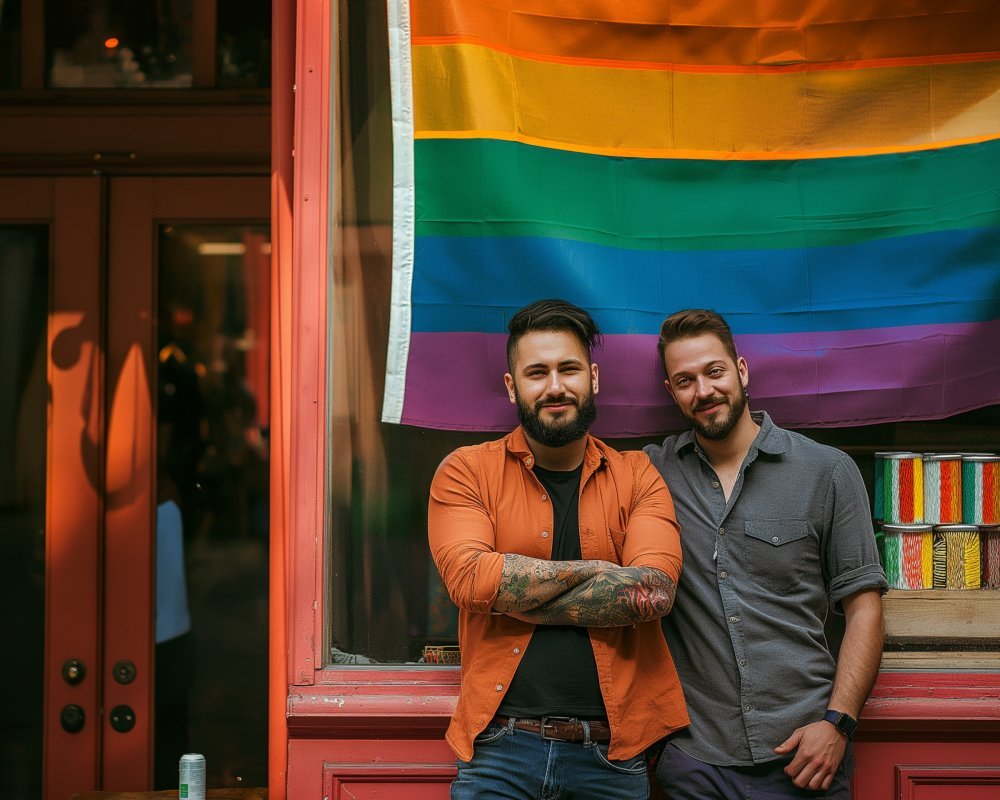
Understanding Gay Relationships: Myths and Facts – Gay relationships have always been a topic of intrigue, mystery, and misinformation. Throughout history, the LGBTQ+ community has faced stigmatization, discrimination, and marginalization. Understanding Gay Relationships: Myths and Facts is crucial in dispelling stereotypes and promoting acceptance and equality. In this blog, we will delve into common myths surrounding gay relationships and shed light on the reality of love and partnership within the LGBTQ+ community.
Debunking Common Myths
Myth #1: Gay Relationships are less serious than heterosexual relationships
One of the most prevalent myths about gay relationships is that they are not as serious or committed as heterosexual relationships. This misconception stems from the historical lack of recognition and legal rights for LGBTQ+ couples. However, studies have shown that gay couples are just as committed and invested in their relationships as straight couples. Love knows no gender or sexual orientation, and gay relationships can be just as deep, meaningful, and long-lasting as any other.
Another prevailing myth is that all gay men are promiscuous and incapable of monogamy. This harmful stereotype perpetuates the idea that gay relationships are inherently unstable and based solely on physical attraction. In reality, many gay couples choose to be monogamous and prioritize emotional connection and commitment in their relationships.
Myth #3: Gay relationships are all about sex
Many misconceptions about gay relationships revolve around sex, assuming that LGBTQ+ individuals are solely focused on physical intimacy. While sexual compatibility is important in any relationship, gay couples also value emotional connection, communication, and trust. Just like any other couple, LGBTQ+ partners seek companionship, support, and love in their relationships.

The Reality of Gay Relationships
Despite the persistent myths and stereotypes, gay relationships are as diverse and multifaceted as any other type of relationship. LGBTQ+ couples experience the same joys and challenges, triumphs and struggles, as their heterosexual counterparts. Love knows no boundaries, and gay relationships thrive on authenticity, communication, and mutual respect.
Fact #1: Communication is key in gay relationships
One of the strengths of gay relationships is their emphasis on open and honest communication. LGBTQ+ individuals have often faced adversity and discrimination, which has fostered a culture of understanding, empathy, and support within the community. Gay couples tend to be more communicative and expressive with their feelings, which fosters trust, intimacy, and connection.
Another fact about gay relationships is that they can be incredibly resilient and adaptive. LGBTQ+ individuals have had to navigate societal challenges and prejudices, which have made them stronger and more resilient as partners. Gay couples are often more willing to challenge traditional gender roles and expectations, creating dynamic and egalitarian relationships based on mutual respect and equality.
Fact #3: Love is love, regardless of gender
At the end of the day, gay relationships are fundamentally no different from any other relationship. The desire for love, companionship, and connection is universal, regardless of gender or sexual orientation. LGBTQ+ couples deserve the same rights, recognition, and respect as any other couple, and their love should be celebrated and embraced.
In conclusion, Understanding Gay Relationships: Myths and Facts is essential in promoting acceptance, understanding, and equality within the LGBTQ+ community and beyond. By debunking stereotypes and shedding light on the reality of gay relationships, we can foster a more inclusive and compassionate society where love knows no boundaries. Love is love, and every relationship deserves to be honored, respected, and cherished, regardless of gender or sexual orientation.
Advertisement · Scroll to continue

More Recommended
Is misgendering discrimination?
Is misgendering discrimination? – Misgendering can be a form of discrimination, particularly within the LGBTQ+ [...]
Building Partnerships with Gay-Owned Businesses
Building Partnerships with Gay-Owned Businesses – In today’s rapidly evolving business landscape, it has become [...]
How to Be an Ally to Your Gay Friends
How to Be an Ally to Your Gay Friends – As we continue to progress [...]
What race has benefited the most from DEI?
What race has benefited the most from DEI? – Certainly! Here’s a detailed blog post [...]
20 SEO tips for Gay-Owned Business Websites
20 SEO tips for Gay-Owned Business Websites – Are you a proud owner of a [...]
Targeting Love: How Retail Giant is Celebrating Diversity with Lesbian-Focused Campaigns
Celebrating Diversity with Lesbian-Focused Campaigns As society becomes more inclusive and accepting of diversity, it [...]
How to Support the LGBTQ+ Community on Your TIKTOK Profile
How to Support the LGBTQ+ Community on Your TIKTOK Profile – In today’s digital age, [...]
Labrys Lesbian Meaning: What Is Labrys Lesbian?
Labrys Lesbian Meaning: What Is Labrys Lesbian? – Labrys lesbian is a term that refers [...]
Gay Bars in Ormond Beach, Florida
Gay Bars in Ormond Beach, Florida – A Detailed Look at the Local Scene Nestled [...]